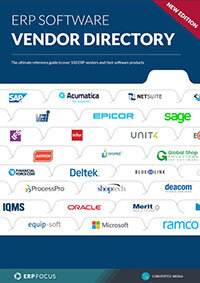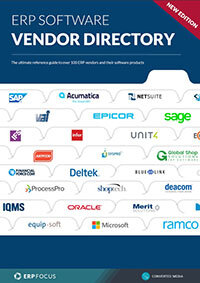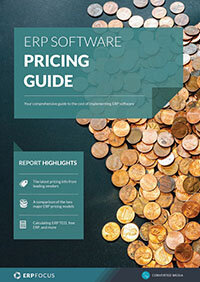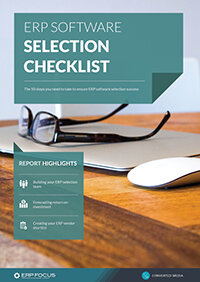What to bear in mind when selecting an enterprise level ERP
By its very nature, ERP platforms are complex animals. Whether your resources choices are driven by a need for information granularity, available functional sets, extended mobility or price; each system is different, thereby making your decision all the more difficult.
Consequently we thought you might find the following list of ‘things to look for’ based on currently typical ERP variants helpful. However, bear in mind that these are highly pro forma, so in the end of the day, the best fit for you should always end up being what you decide, rather than only committing on the basis of a third party perspective.
Simplicity
Believe it or not there are degrees of simplicity in the ERP world, and even though the information axiom; ‘more is less’ may appear to be universal, it’s really how clear information is delivered that usually makes for the best pick. In this case, then, true simplicity typically begins at the User Interface (UI) level. For example, are the screens clear and easily understood? Does the UI make sense even for novice operators, or do they suggest that remedial training will be absolutely necessary, all the time?
Elements like this can make or break an implementation, since regardless how useful the system may appear to be at the back-end, it’s the operators at the front-end who are going to push the buttons and pull the levers necessary to create meaningful work product.
Scalability
In this case, I don’t mean the enterprise ERP itself, but how a proposed system scales against the size of your particular enterprise. For example, if you are a business with say 10 to 20 employees, but operate in the jewelry business, either as a wholesaler, or even a chain retailer, a company of this type can generate revenue values that would typically apply to much larger firms.
Therefore, if you have decided that your wholesale business requires constant push/pull information derived by an mobile international sales force, working with three mine operators, four raw materials delivery operators, and four distribution centers; all together creating a significant and critical volume of raw data, the promise of ERP can probably help. However, given this particular company’s physical size what it doesn’t need will be a full-blown SAP system encompassing everything under the sun, ranging from flying monkey’s to buzzing widgets, costing hundreds of thousands, supported by 40 partner consultants each costing $300 per hour. Instead, this company could gain great value by simply implementing one of the more fully-integrated cloud systems, at a highly-reasonable price, sold to an equally small, but highly experienced ERP partner.
In this event, it’s not the physical size or complexity of the system, its cost, or how many people will help the company with its purchase, but simply understanding and accepting what it wants from the outset – it’s really that simple.
Native security
Given today’s digitized economy, where a business in Rochester NY can compete for a particular customer base head-to-head with operators in London or Paris, systems security must be a paramount concern for any commercial operation. Without wading through who, why, and where hacks come from, suffice to say that they do; and since ERP is data/information driven, any bad guy with an interest in your market space, is likely to take a run at your business sooner rather than later.
Consequently, there are two types of security in today’s market, third-party security systems, also accepted as being non-native or add-on products, versus intrinsically designed native security systems that become part of a particular ERP system’s essential design. Each variant create various value impacts, but mostly those associated with the final purchase cost.
Nevertheless, in the case of both small and mid-sized ERP systems, the inclusion of native security is always a better choice since in the event base-level security components operate much more effectively thereby providing better end-to-end security capabilities.
Extended mobility
Finally, while this particular feature set may appear to be obvious, it cannot be overstated; since any ERP system that doesn’t offer an elemental capability to actively and easily interact with one or more mobility-driven channels in real-time must be discarded. Whether we like it or not, mobility has, and will continue to be, a central driver for commercial operations far into the future.
The value of this is simple; enterprise ERP systems live and die on the basis of data volume; and the more intrinsic channels pushing packets from a multi-point locations to a central headquarters hub, the more information will ultimately find its way to the bottom line in the form of reports, analytical matrices, overall business intelligence and more. So, mind this value point specifically, because without this capability, in today’s business world, you really have nothing going for yourself.
Free white paper

ERP Software Vendor Directory
Put the most comprehensive ERP vendor directory on your desk today

Featured white papers
-

ERP Software Pricing Guide
Get the latest pricing information on over 80 popular ERP systems, and learn how to budget for your ERP project in our free guide
Download -

60-Step ERP Selection Checklist
Get the comprehensive checklist for your ERP selection project
Download -

ERP Demo Guide & Scorecard
Master your ERP demo with 5 easy steps using our free guide (includes demo scorecard)
Download
Related articles
-

The best ERP systems for process manufacturing
Consider these ERP systems when selecting your next process manufacturing ERP
-

CMMC Compliance: What Aerospace and Defense Manufacturers Need to Know
Key insights on CMMC compliance, deadlines, and securing DoD contracts with CMMC 2.0 certificatio...
-

5 ERP pricing definitions you need to understand
Have you mastered the ERP pricing lexicon yet? Getting to grips with these five definitions is a ...

